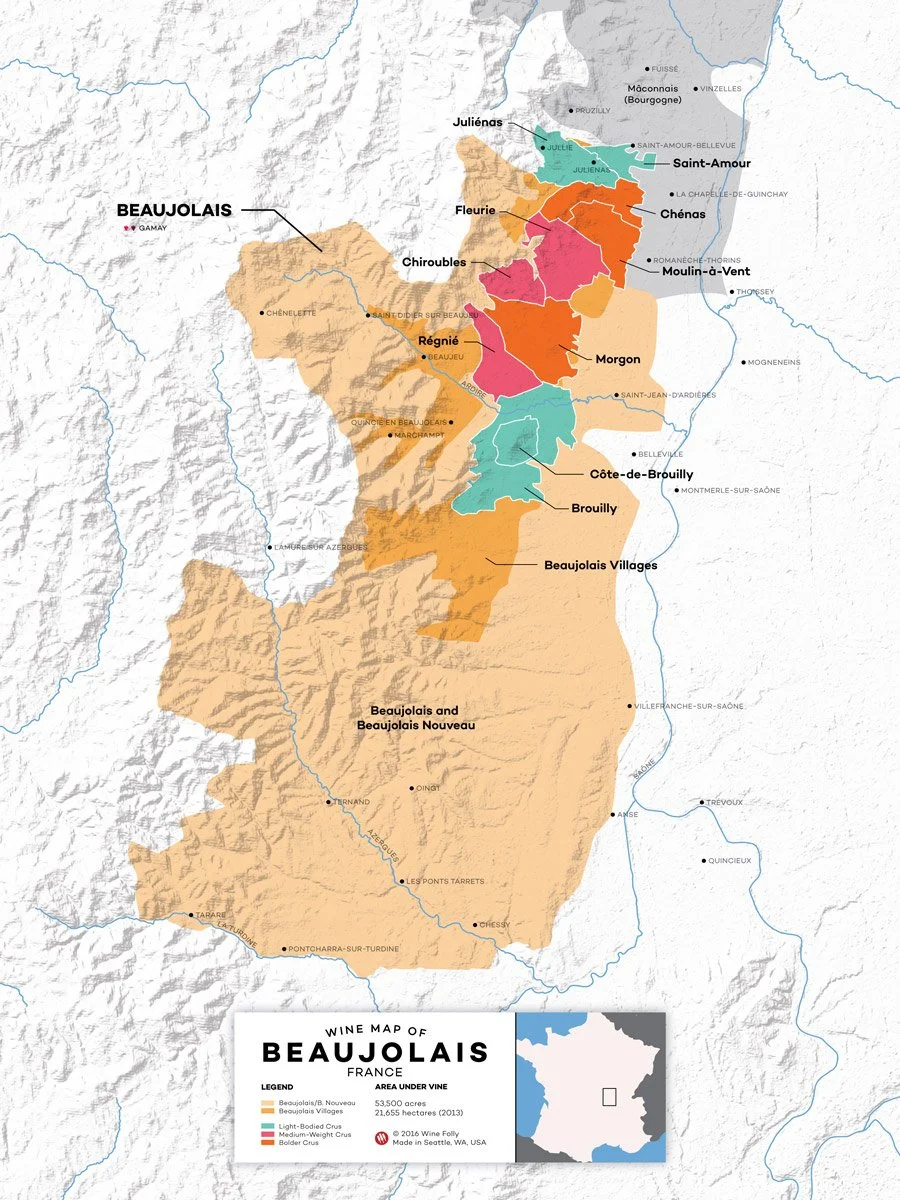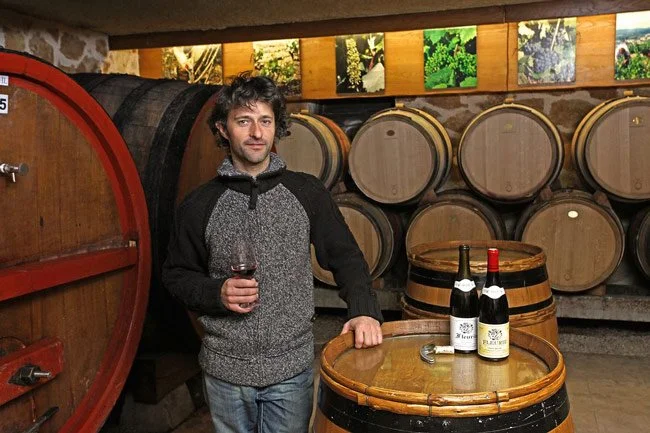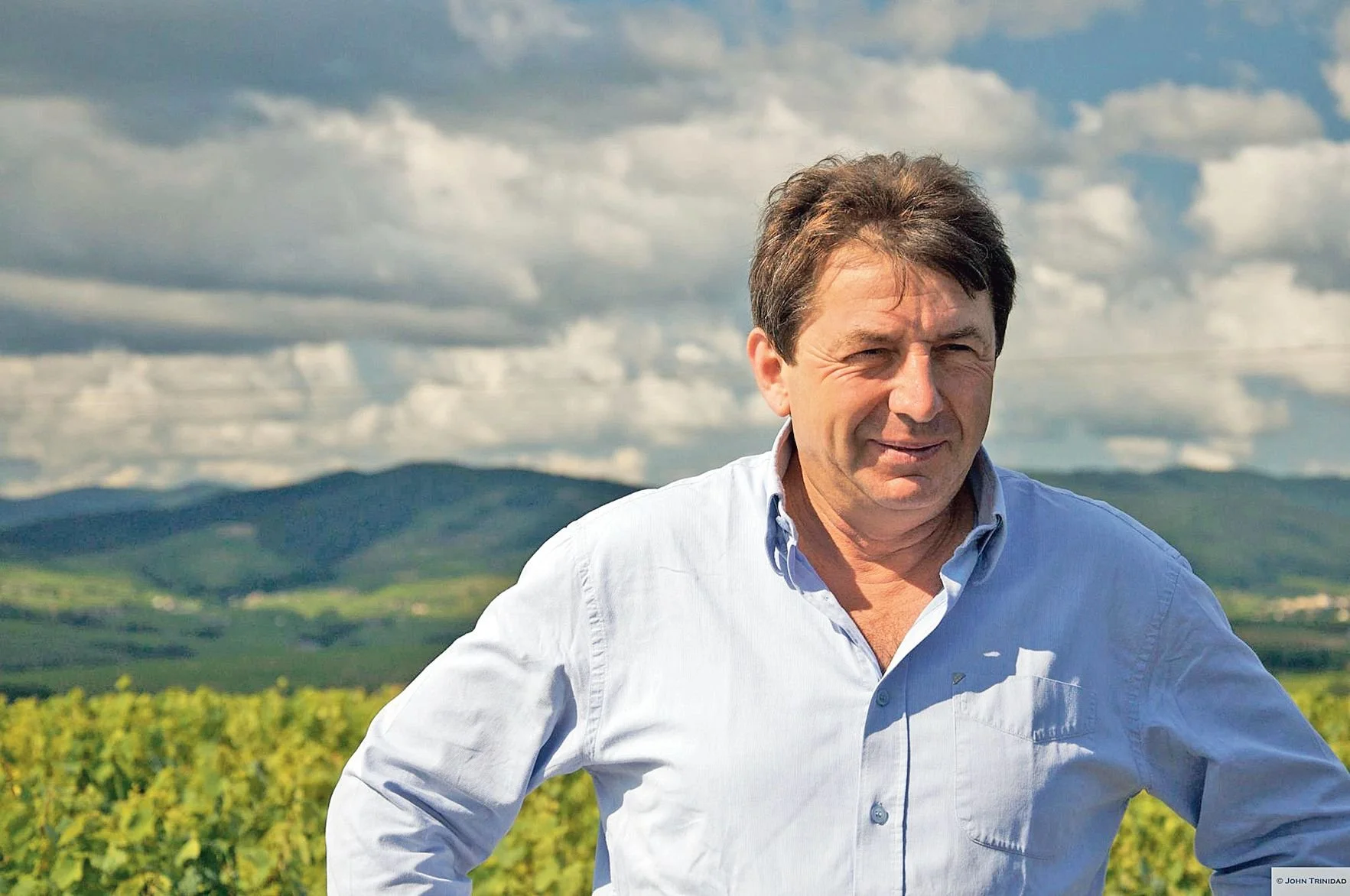Beaujolais
BEAUJOLAIS
A French region just south of Bourgogne that’s devoted to Gamay-based wines. Most Beaujolais are simple, rustic reds, but the 10 Crus offer exceptional quality.
HISTORY
Benedictine monks developed vineyards here as early as the 7th century; for much of the medieval period, Beaujolais, in wine terms, was simply the southern neighbor of the great region of Burgundy. Beaujolais is named after Beaujeau, the town in the western hills founded in the 10th century. The region’s viticultural identity was forged in part when Philip the Bold issue an edict against the growing of Gamay in Burgundy proper. Beaujolais also faced discrimination from its northern neighbors in the Maconnais who decried Beaujolais wines as “greatly harmful” for consumption. Nonetheless, Beaujolais became a mainstay staple in Parisian wine bars. Much of this would be undone with economic misfortune, phyloxerra and mass expansion into less desirable vineyards lands to the south. After WW2, Beaujolais became associated with fresh, young primeur wines, shipped to Paris and Lyon where the simple, affordable style became a bistro staple. The wines became a worldwide phenomenon in the 70’s under the name Beaujolais Nouveau, at its peak Nouveau made up more than 80% of production.
Already, however, a shift was under way towards higher-quality wines, attributed to several prominent producers known as the “Gang of Four”, led by winemaker Marcel Lapierre and scientist Jules Chauvet. This cohort advocated for organic farming, minimal use of sulphur, precepts that would influence the natural wine movement in France. The region got another boost in the 2010’s with the availability of precise soil maps for the region’s 10 crus.
SOIL TYPE
Soils are pink granite, red sand and quartz, components that help to create powerful wines with an often peppery, spicy finish. Typical flavors include floral aromas of rose, iris, peony, and spice with woodsy notes that develop with age.
WHAT IS BEAUJOLAIS NOUVEAU?
Beaujolais nouveau is a red wine made from Gamay grapes produced in the Beaujolais region of France. It is a vin de primeur (young wine), fermented for just a few weeks before being released for sale on the third Thursday of November. Distributors famously race to get the first bottles to different markets around the globe. It was employed as a marketing technique to promote the region but sadly, many Americans now equate proper Beaujolais with the simple fruity wine that gets served around Thanksgiving. At its peak in 1988, Nouveau accounted for more than 60% of all Beaujolais produced.
GAMAY GRAPE
Gamay, or Gamay Noir, ancient Burgundian red grape variety solely responsible for the dis-tinctive, evolving, and no longer unfashionable wines of Beaujolais. The introduction of Gamay to the vineyards of the Cote d’Or in the late 14th century was viewed as scandalous by those whose livelihood did not personally depend on rearing productive vines, and great efforts were made to retain PINOT NOIR at the expense of the less noble newcomer. Although today an increasing proportion of Beaujolais, particularly from the Crus is vinified like red burgundy with full barrel aging and is expected to age for several years in bottle, Gamay juice long tended to be vinified in a hurry, not least because of strong market pressure in the 1970s and 1980s for Beaujolais Nouveau. As a wine, Gamay tends to be paler and bluer than most other reds, with relatively high acidity and a simple but vivacious aroma of freshly picked red fruits, often overlaid in the Nouveau era by the less subtle smells associated with rapid CARBONIC MACERATION such as bananas, boiled sweets, and acetone.
REGIONAL APPELLATIONS AND STYLE
Beaujolais AOP
· Made from grapes grown anywhere in the region (a small proportion is white)
Beaujolais Nouveau
· These easy-drinking red wines are released on the third Thursday in November following the harvest. They should be drunk soon afterwards.
Beaujolais-Villages AOP
· There are 38 designated villages. The wines do not have the individual names on the labels and simply designated as villages.
Beaujolais Crus
· These are the regions best wines
· Ten named villages, each with its own AOP.
· Red wines onlhy made from the Gamay grape
· Hillside vineyards
· Granite soil
· Morgon AOP is a great example of a Beaujolais Cru Village.
THE CRUS: Julienas, Saint-Amour, Fleurie, Chenas, Moulin-a-Vent, Chiroubles, Regnie, Morgon, Cote de Brouilly, Brouilly
Cedric Chignard
DOMAINE CHIGNARD JULIENAS BEAUVERNAY
Even after many successful years practicing his craft, fourth-generation vigneron Michel Chignard claims to be a novice. He is a modest man, kind and courteous, but in every aspect of his winemaking one clearly sees a passionate perfectionist. In 2007 Michel turned the management of the family domaine over to his son Cédric, who is carrying on this philosophy with great pride and has already managed to prove himself in his first few vintages. The Chignard family is also blessed with vineyards in one of the best sites of the Fleurie appellation, Les Moriers, an arrowhead-shaped parcel that juts right down into Moulin-à-Vent vines. Their eight hectares of vineyards average over seventy years old, keeping yields naturally low. These old-vine root systems also run very deep, accessing minerals from the granite subsoil and giving Chignard’s Fleurie a trademark goût de terroir and great freshness.
Juliénas Beauvernay :
• Beauvernay parcel sits at high elevation (450 m) with full southern exposure
• Aged in concrete tank
• The exact etymology of the name Beauvernay is unknown but the Chignard family has uncovered a few possible origins. The historical name for the hill on which this parcel resides is the “Côte de Beauvernay.” At the base of this hill, there is a small river and along the banks you’ll find “Verne” trees, a type of Alder. The hillside was therefore named for the trees at the base and the addition of “beau” is simply a term of endearment-hill with beautiful Alders or hill with beautiful view of Alders.
This is a lovely Beaujolais from the Chignard family, better known for their Fleurie "Les Moriers." As with much of Julienas the bedrock of "Beauvernay" is diorite, rather than granite, locally called "roches bleues." It's an interesting terroir of volcanic origin with more clay and rich in magnesium, giving complex well-structured wines. Possessing the ripe fruit and lush palate of the 2022 vintage in Beaujolais, the Julienas "Beauvernay" shows a pretty red/black color, with elegant, a bit restrained aromas of black raspberry and black cherry with violet, blood orange, earth and stone, which should open up nicely over the next few years. It's ripe and sapid but with lively acidity and well proportioned. Tart cherry, plum and red currant fruit with saline minerals, earth and spice coat the palate and continue in the earthy finish.
YANN BERTRAND FLEURIE COUP DE FOUDRE
Yann Bertrand’s philosophy is simple; attain the most beautiful balance possible for the soil, as a soil with good equilibrium will produce a grape that represents the terroir where it is grown. Established in the 1950’s by Louis Bertrand, Les Bertrand is located in a special part of Beaujolais called ‘Grand-pré’. A section that straddles the crus of both Fleurie and Morgon, rich in sandy granitic soil. The estate wines from these appellations are uniquely different even though all the vines are in the same area. The complexity found in the vineyard is demonstrated through these different cuvees. There is also some cuvee from other appelations where Yann has sourced fruit from like minded growers. A 2 hectare plot of 50 to 70 year old vines on fine granitic soils. Elevage in 225 litre barrels of 7+ years and demi-muids an additional 11 months aging in bottle prior to release. The fruit shines, this is a wine of power and structure. The tannins more defined than Chaos, yet still fine. The palate is fluid, there is tension and length. Blood orange, a little alpine herb, crushed rock.
JEAN FOILLARD MORGON EPONYM
Jean and Agnès Foillard took over his father’s domaine in 1980, and soon thereafter began to make Kermit Lynch customers very happy. Most of their vineyards are planted on the Côte du Py, the famed slope outside the town of Villié-Morgon and the pride of Morgon. These granite and schist soils sit on an alluvial fan at the highest point above the town and impart great complexity. However, great real estate is not the only key to Foillard’s success. Early on, Jean began to follow the teachings of Jules Chauvet, a traditionalist who defied everything that the more commercial brands were touting in the region. Jean and three other local vignerons, Marcel Lapierre, Jean-Paul Thévenet, and Guy Breton, soon joined in on the movement. This Gang of Four, as Kermit christened them, called for a return to the old practices of viticulture and vinification: starting with old vines, never using synthetic herbicides or pesticides, harvesting late, rigorously sorting to remove all but the healthiest grapes, adding minimal doses of sulfur dioxide or none at all, and refusing both chaptalization and filtration. The end result allows Morgon to express itself naturally, as it should be without the bubblegum and banana aromas of so many other Beaujolais available today. Its rustic structure, spicy notes, and mineral-laden backbone are what real Morgon is all about.
This estate comprises nearly fourteen hectares. Foillard’s Morgons are deep, structured, and complex, with a velvety lushness that makes them irresistible when young despite their aging potential. Jean raises his wines in older barrels sourced from top estates in Burgundy, a logical decision for someone crafting Gamay in a Burgundian style. It is the passion and dedication of vignerons like this that have brought pride back to the crus of the Beaujolais.
he third and latest addition to Jean Foillard’s stellar lineup of Morgons comes from the Charmes lieu-dit, one of the highest parcels in the appellation. In contrast to the grandiose, deeply structured Côte du Py and silky-smooth Corcelette, this cuvée features a bit more crunch with lots of bright acidity and a leaner, more mineral profile. It nonetheless shares the satin texture of all Foillard Morgons, and should age similarly well for those willing and able to wait.
ANNE AMIE GAMAY NOIR, WILLAMETTE VALLEY, OREGON
Light, bright and spicy, this ultimately quaffable wine sings of summer. That's not to say it's simple. The tart plum and strawberry fruits have peppery herbal highlights, and the substantial tannins carry a thin seam of cola. This spent 10 months in French oak, while retaining its freshness. Enjoy this tasty, tangy bottle over the next couple of years.



